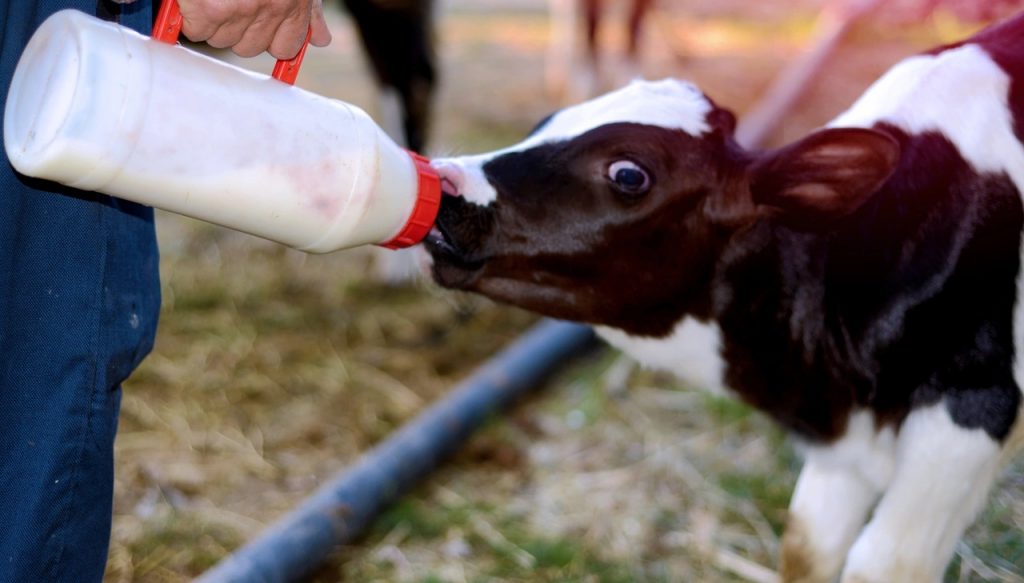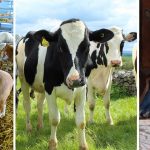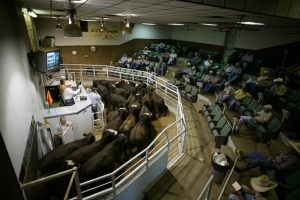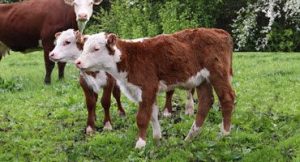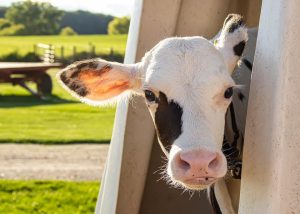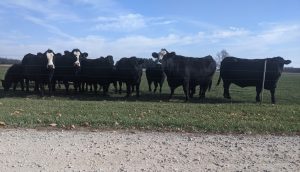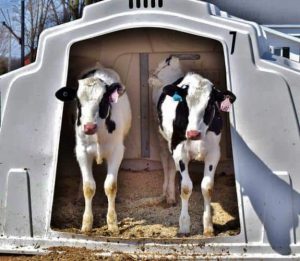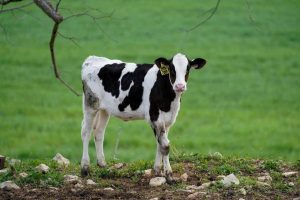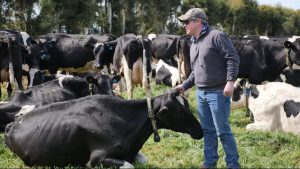
Since ruminants do not transfer antibodies in utero, calves must absorb antibodies from initial feeding of colostrum. There are numerous factors that influence how much and how well those antibodies are absorbed (Kertz, 2019). Thus, the degree of transfer of passive immunity (TPI) can vary considerably. And that does affect how much antibody protection is provided to calves and how well they perform in their first two months or so of life.
In recent years, many dairy producers have been breeding the mid- to lower-producing cows in their herd to beef sires. This has created a population of dairy-beef crossbred calves, which often end up in calf ranches and feedlots. This is the context for a study done at a calf ranch in California (Pereira et al., 2024).
The study was on a single calf-raising facility from January to August 2021. Calves were dairy-beef crossbreds arriving with available information on calf identification number, breed, sex and dairy of origin from six sources in the California Central Valley with herd sizes ranging from 1,050 to 4,800 cows. Calves enrolled were between 0 and 1 day of age, arrived daily and were housed in a conventional California hutch system – individual wood calf hutches with a space of 1.23 sq. m.
Upon arrival at the calf-raising facility, all male calves were castrated and bottle-fed 2 liters of milk replacer twice daily at 0600 and 1500 hours containing 22% crude protein (CP), 20% fat, 22.5 mg/kg decoquinate (200 g/L) until day 55 + 5. Then, milk replacer was reduced to one daily morning feeding with 13.0% solids until weaning at day 61 + 6 after arrival. After weaning, calves were kept in hutches until day 85, when they were moved to group pens or another facility.
Calves were offered ad libitum water in buckets after day 1 and calf starter ad libitum after day 3 + 1 (16.0% CP, 6.0% ash, 11% neutral detergent fiber and 35.2% starch), protein-pellet (44.1%), steam-flaked corn (49.4%) and oil (1.6%), along with alfalfa hay (4.9%).
Blood was sampled at 24 + 1 hours from the jugular vein after arrival and used for measuring serum immunoglobulin G (IgG) and TP concentration. A second blood sample was collected to analyze for occurrence of dehydration in calves. Calf health evaluations and disease treatments were performed daily at 5 a.m. by two trained farm personnel.
Data in Table 1 show bodyweights were pretty high for crossbred calves, with about one-half each being female and male. But the variation in bodyweights is quite large. Likewise, from one-half to two-thirds of all calves had either diarrhea or respiratory issues.
The averages for serum IgG and TP were slightly above targets of 20 and 5, respectively. Lombard et al., (2020) recommended an upgrade from those traditional values, as noted in Table 2.
In this study, TPI-IgG were slightly greater for the Lower and Poor categories and lower than Fair and Excellent categories than for the Lombard et al. 2020 recommendations but more similar to the NAHMS 2014 data. That may not be too surprising since calves in this study were sourced from six dairy farms, which would vary in how they harvest, handle and feed colostrum. In addition, about one-half of calves in this study were male calves, which may not have received as good of colostrum administration as the greater-valued female calves.
Data in Table 3 show:
-
Incidence of diarrhea and respiratory issues and overall decreased with increasing TPI-IgG blood levels.
-
From 80% to 90% of calves had these diseases.
-
From 60% t0 73% of calves had diarrhea.
-
From 46% to 74% of calves had respiratory issues. Respiratory issues tend to impair calves for life (Kertz, 2019).
-
Mortality decreased from 5.9% to 1.1% as TPI-IgG blood values increased and improved.
Table 4 showed a similar pattern for TPI-TP as did TPI-IgG in Table 3, but the incidence of respiratory issues was lower (55.4 to 44.0 versus 74.0 to 46.1%) with TPI-IgG versus TPI-TP. This may reflect that IgG is a more precise measure of serum antibody proteins than total serum protein. In either case, there were no significant differences among male versus female or breeds in crossbred calves.
The relationship between TPI and average daily gain is shown in Figure 1 (kindly provided by Marcos Marcondes). Note that there is a significant stair-step increase in daily gain as TPI-IgG serum category levels increased from Poor to Good (graph A) – but not as much of an increase for TPI-TP (total protein), with the only increase going from Poor to Fair categories (graph B). The likely reason for this difference in IgG being more descriptive than total protein is because the IgG assay is more definitive of the major antibody protein category, while total protein is a more gross and less precise method. However, the IgG method also takes longer and costs more to do than total serum protein, so it fits more for research trials such as this one, while total serum protein can be done quickly on the farm and has a lower cost.
The best predictor point for morbidity and mortality was 21.2 and 18.6 g/L and for TP was 5.3 and 5.1g/dL, respectively.
The Bottom Line
This study confirmed the importance of morbidity, mortality and daily weight gain measurements to antibody protection due to colostrum administration to newly born calves. Measuring IgG was more precise and had a stronger relationship with health and performance, but it is also more costly and time consuming to do than total serum protein. Also, having a large number of calves was beneficial in this study to delineate relationships studied due to great variability in calf data.
References
Kertz, Alois F. Dairy Calf and Heifer Feeding and Management—Some Key Concepts and Practices. Outskirts Press, July 31, 2019, 166 pages. https://outskirtspress.com/dairycalfandheiferfeedingandmanagement
Lombard, J., N. Urie, F. Garry, S. Godden, J. Quigley, T. Earleywine, S. McGuirk, D. Moore, M. Branan, M. Chamorro, G. Smith, C. Shivley, D. Catherman, D. Haines, A. J. Heinrichs, R. James, J. Maas and K. Sterner. 2020. Consensus recommendations on calf- and herd-level passive immunity in dairy calves in the United States. J. Dairy Sci. 103:7611–7624
Pereira, Jessica M. V., Fernanda C. Ferreira, Pedro H. V. Carvalho, Joao Bittar, Noelia Silva Del-Rio and Marcos I. Marcondes. 2024. Association of morbidity, mortality and average daily gain with transfer of passive immunity in dairy-beef crossbred calves up to 60 days of life. J. Dairy Sci. 107:8223–8233.
USDA-NAHMS (USDA-National Animal Health Monitoring System). 2014a. Morbidity and Mortality in U.S. Preweaned Dairy Heifer Calves NAHMS Dairy 2014 Study Calf Components.
USDA-NAHMS (USDA-National Animal Health Monitoring System). 2014b. Off-Site Heifer Raising on U.S. Dairy Operations.
You can now read the most important #news on #eDairyNews #Whatsapp channels!!!
🇺🇸 eDairy News INGLÊS: https://whatsapp.com/channel/0029VaKsjzGDTkJyIN6hcP1K
